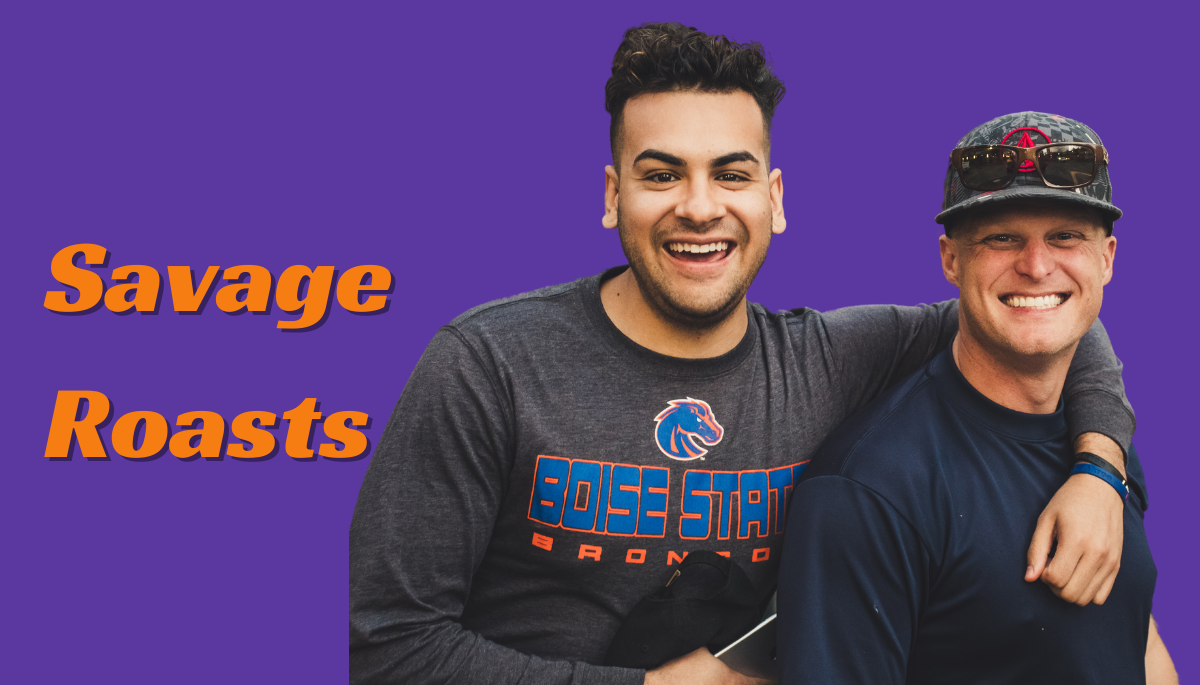Introduction
Roasting has become one of the most entertaining ways to make people laugh. Whether on stage, in a group of friends, or during a special event, a well-delivered roast can leave the audience in stitches. But when people talk about a “savage roast,” they’re referring to a roast that hits harder, sounds sharper, and still lands in good fun.
The challenge? Walking the fine line between hilarious and hurtful. A roast that’s too soft won’t get laughs, while one that’s too harsh can damage relationships or make you look cruel. The real art is being clever, bold, and creative—without losing the respect and affection at the heart of a great roast.
In this guide, you’ll learn what makes a roast savage, techniques for writing and delivering them, common mistakes to avoid, and practical strategies to make sure your jokes are remembered for laughs, not regrets.
What is a Savage Roast?
A roast is a form of humor where someone playfully insults another person, usually in a setting where everyone understands it’s all in good fun. A “savage roast” is sharper and more daring than a typical roast—it exaggerates flaws, pokes at quirks, and delivers unexpected punchlines that make people laugh and gasp at the same time.
The key difference? A savage roast pushes the humor to its limits, but without crossing into genuine cruelty. It’s not about tearing someone down; it’s about showcasing wit, timing, and creativity in a way that everyone—including the person being roasted—can enjoy.
Core Principles of a Savage Roast
-
Know Your Audience and Roastee
Understand what the audience finds funny and what the person being roasted can handle. -
Respect the Boundaries
Stick to quirks, habits, or universal truths. Avoid sensitive issues like health, family struggles, or personal trauma. -
Build on Truth
The funniest roasts start with something real. Exaggerating a true detail makes the humor more relatable. -
Mix Up Styles
Don’t rely on one-liners alone. Use analogies, comparisons, callbacks, and clever wordplay. -
Use Timing to Your Advantage
A pause before the punchline can make it land harder. Delivery is just as important as the words. -
Balance Harsh with Light
If you go too savage, sprinkle in a self-roast or a softer jab to keep the tone balanced. -
End With Warmth
Finish your roast with something positive, so the roastee feels respected and the audience leaves smiling.
Step-by-Step: How to Write a Savage Roast
-
Collect Raw Material
List quirks, habits, style choices, catchphrases, or funny stories about the roastee. -
Choose Safe Themes
Pick details everyone knows and finds amusing. For example, lateness, fashion sense, or social media habits. -
Brainstorm Punchlines
Write multiple jokes for each theme. Some will be sharper than others—keep your best. -
Use Structure
Arrange your jokes from mild to savage. Start soft, then build up to the strongest roast. -
Edit Ruthlessly
Cut anything too repetitive, too personal, or not funny enough. -
Practice the Delivery
A good roast depends on timing, tone, and confidence. Practice so your punchlines feel natural.
Styles of Savage Roasts
-
Analogy & Comparison
“You’re like Wi-Fi—spotty, unreliable, and gone when people need you most.” -
Exaggeration
“Your cooking is so bad even smoke alarms refuse to work around you.” -
Wordplay
“You have something in common with software updates—you show up late and nobody really wants you.” -
Misdirection
“You finally posted a gym selfie! For a second I thought you worked out—turns out you just walked past it.” -
Callbacks
Tie back to something said earlier in the event or conversation. Example: “Remember when I said you’re always late? Well, here’s your chance—you’re even late to being successful.”
Delivery Tips
-
Confidence is Key: Deliver lines with certainty, even if they’re absurd.
-
Use Pauses: Let the room anticipate the punchline.
-
Control Your Tone: Smile, keep energy light, and avoid sounding genuinely angry.
-
Engage the Audience: Look around, not just at the roastee.
-
Know When to Stop: Too many jabs in a row can shift from funny to mean.
Mistakes to Avoid
-
Targeting insecurities like body image, income, or family.
-
Over-explaining jokes—if it needs explaining, it isn’t funny.
-
Using inside jokes that half the audience won’t get.
-
Roasting someone without their consent or comfort.
-
Dragging it out too long—the sharpest roasts are short and memorable.
Why Self-Roasting Works
One of the best ways to balance savage humor is to include yourself. If you make a few jokes at your own expense, the audience sees you as humble, and the roastee feels safer laughing along. For example:
-
“I’d roast your cooking, but then I remembered mine has already been reported as a public health hazard.”
-
“At least when you’re late, people still wait for you. When I’m late, they just celebrate.”
Examples of Light-Hearted Savage Roasts
Here are some safe but savage one-liners:
-
“You bring people together… mostly to complain about you.”
-
“You’re proof that evolution sometimes hits pause.”
-
“Your phone battery lasts longer than your motivation.”
-
“You have something in common with traffic lights—confusing, slow, and always in the way.”
-
“If laziness were an Olympic sport, you’d still come last.”
Read More: PedroVazPaulo Consulting: Drive Business Success
Conclusion
A savage roast is not about being mean—it’s about being sharp, clever, and fun. The best roasts reveal truth through humor, exaggeration, and creativity, making people laugh while still showing respect for the person at the center of it all.
When you roast, remember the golden rule: make sure the person being roasted can laugh along too. Stick to playful jabs, avoid sensitive issues, and balance your sharpest burns with self-deprecating humor or lighthearted remarks. Delivery matters just as much as content, so practice timing, tone, and confidence before stepping into the spotlight.
At the end of the day, a savage roast should bring people closer through shared laughter. If you can walk the line between daring and respectful, your roast won’t just be remembered—it’ll be legendary.
FAQs
1. What makes a roast funny instead of mean?
A funny roast highlights quirks or habits in a playful way, while a mean roast targets insecurities or vulnerabilities.
2. How do I know if my roast has gone too far?
If the roastee or audience stops laughing and looks uncomfortable, it’s time to pull back.
3. Can I roast someone I don’t know well?
It’s risky. Stick to general observations and avoid personal jokes if you don’t know them closely.
4. Should I roast myself too?
Yes—self-roasting shows humility and balances out your sharper lines.
5. How can I prepare for a roast battle or event?
Research your target, brainstorm multiple jokes, edit carefully, and practice delivery until it feels natural.





